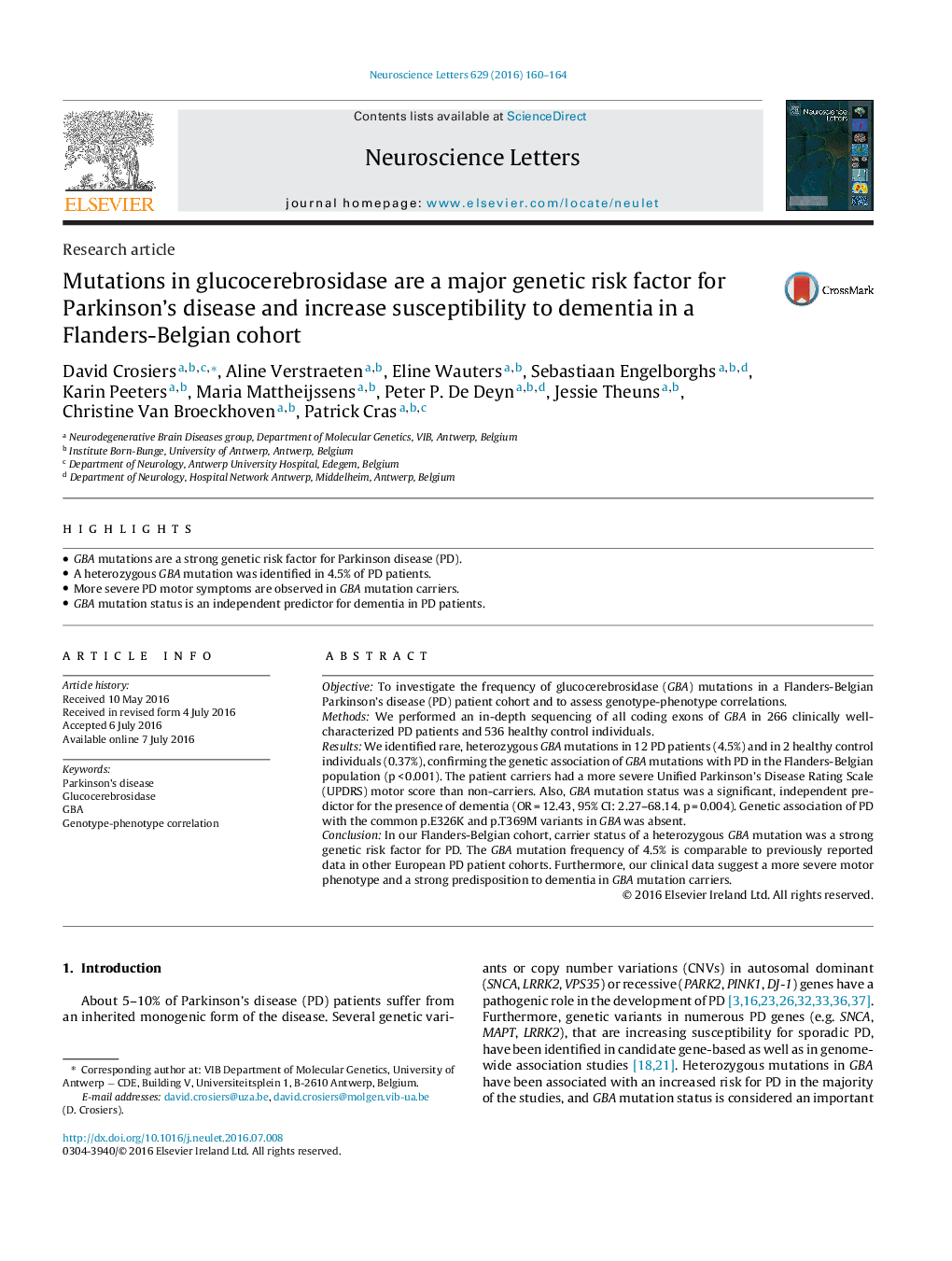| Article ID | Journal | Published Year | Pages | File Type |
|---|---|---|---|---|
| 4343230 | Neuroscience Letters | 2016 | 5 Pages |
•GBA mutations are a strong genetic risk factor for Parkinson disease (PD).•A heterozygous GBA mutation was identified in 4.5% of PD patients.•More severe PD motor symptoms are observed in GBA mutation carriers.•GBA mutation status is an independent predictor for dementia in PD patients.
ObjectiveTo investigate the frequency of glucocerebrosidase (GBA) mutations in a Flanders-Belgian Parkinson’s disease (PD) patient cohort and to assess genotype-phenotype correlations.MethodsWe performed an in-depth sequencing of all coding exons of GBA in 266 clinically well-characterized PD patients and 536 healthy control individuals.ResultsWe identified rare, heterozygous GBA mutations in 12 PD patients (4.5%) and in 2 healthy control individuals (0.37%), confirming the genetic association of GBA mutations with PD in the Flanders-Belgian population (p < 0.001). The patient carriers had a more severe Unified Parkinson’s Disease Rating Scale (UPDRS) motor score than non-carriers. Also, GBA mutation status was a significant, independent predictor for the presence of dementia (OR = 12.43, 95% CI: 2.27–68.14. p = 0.004). Genetic association of PD with the common p.E326K and p.T369M variants in GBA was absent.ConclusionIn our Flanders-Belgian cohort, carrier status of a heterozygous GBA mutation was a strong genetic risk factor for PD. The GBA mutation frequency of 4.5% is comparable to previously reported data in other European PD patient cohorts. Furthermore, our clinical data suggest a more severe motor phenotype and a strong predisposition to dementia in GBA mutation carriers.
